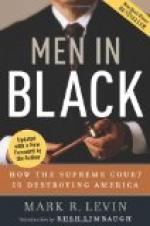Some of the important answers may be yes or no. Counsel in such a case supplies the color and gives an appearance of life to what is actually alive enough, but which alone would seem dry. Even if so famous a character of fiction as “Becky Sharp” came into court and only looked her part with what intense interest would we not hang on her testimony, though it consisted of no more than “Yes, I did”; “I never saw him before.” We should be fascinated by this bald statement because Thackeray had interested us so enormously in the lady. The air would be electrified by the force of her personality. Without a previous introduction, however, we might be so lacking in discernment as to find her, in appearance and voice, no more unusual than the average witness who goes on the stand.
Thackeray not only created Becky Sharp; he also created our interest in her. Similarly the lawyer may create an interest in his witnesses, some of whom may be personally every bit as extraordinary as any character in a novel. If a witness be actually commonplace, there is all the more need for making him vividly human; if he be so colorless that nothing could be made of him personally, he may acquire interest through the class to which he belongs, for classes have a personable color more deep than the almost colorless individual.
To induce the jury to visualize the story and the characters, the highest literary gift may be brought into play. The lawyer is limited as to time and the description he may employ. He has, however, his voice and expression: an actor’s tools. But again the rule of simplicity and naturalness should apply.
The opening speech is a prologue and it does not argue. Counsel will not be permitted to argue his case in his opening, for his opponent will object and the Court will often say, warningly, “Counselor, you are summing up.” This limitation, however, is in reality an advantage, not merely because it applies to both sides, but for the reason that no lawyer with any sense of dramatic values would anticipate his denouement. Argument is apt to be chilling unless the decision sought for can be discerned, however dimly, without it. And how are the jury to frame their decision before the evidence has been presented? The jury should be interested in Miss Becky Sharp and prepared to understand her testimony, but, before they have heard her story from witnesses who know, they will not be favorably impressed by urgings that she was wronged or badly treated.
There is usually leniency in regard to the length of the opening, because it is well recognized that few witnesses can tell a connected story, or tell it well. From the old French story of the lawyer who began avant le creation du monde, and the judge who asked him to pass on au deluge, down to the usual modern method of nagging the lawyer into stating only the skeleton of the action, there are various degrees of eloquence, varying naturally according to the importance of the case.




